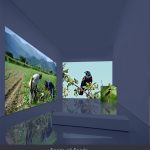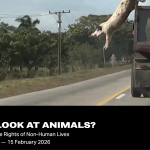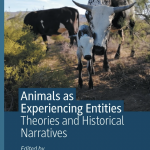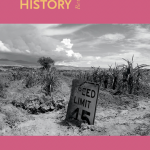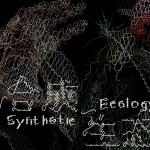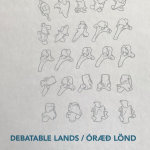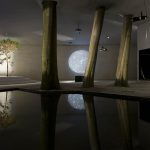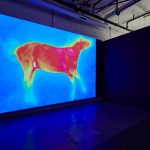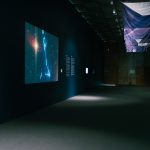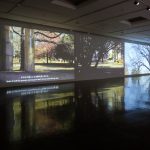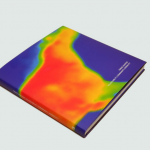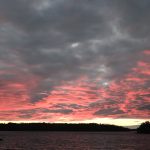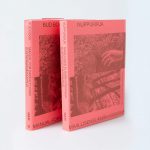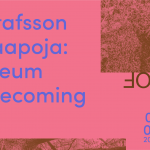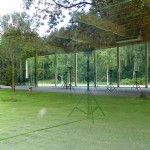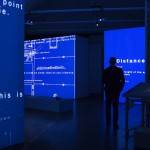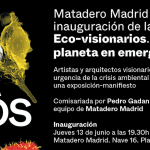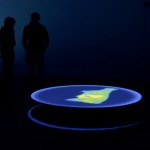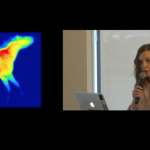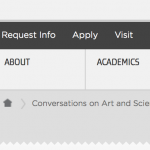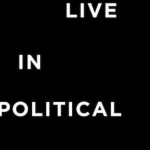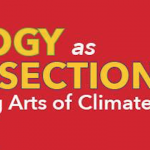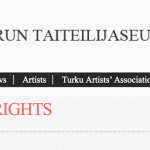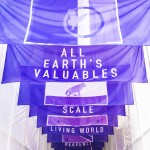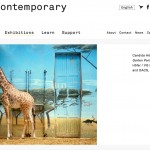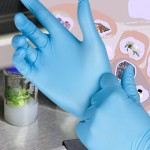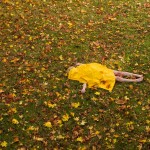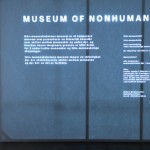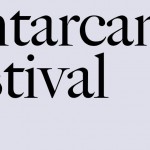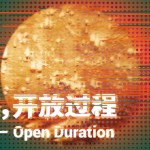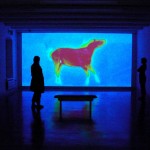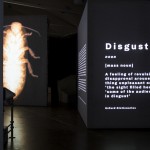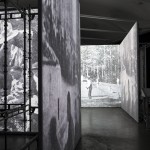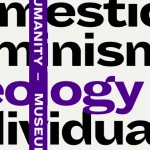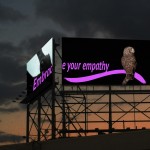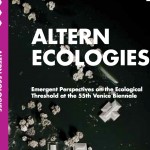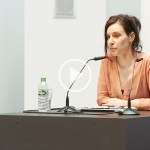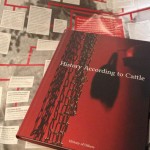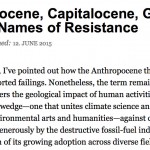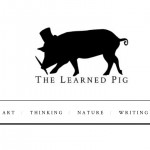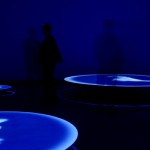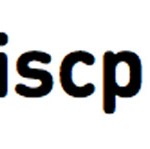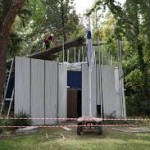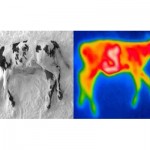Essay on: thisisnotablog.co
May, 2019
In the wake of catastrophic climate change, a wave of discourses reflecting upon possible futures has emerged in art and the academia. What seems to be at hand is nothing less than the endangerment of the future itself – the grimness of the present ecological and socio-political situation forces us to ask whether we are facing the end of the world as we know it, and whether there is life after. The question of what could lie on the other side of a necessary paradigm shift offers a platform for speculation upon dystopian as well as utopian futurities, both of which are hoped to help facilitate a transition to wherever we are heading.
I argue here that the endangerment of the future is not a new phenomenon that has emerged out of the environmental crisis, but an existential condition shared by many in the crossfires of patriarchy and racism. I argue also that the endangerment of the future as a modality of existence is not limited to the conditions of genocide and oppression faced by black and indigenous people historically and in the present – conditions which I in no way play down, but which in many cases underpin discourses connecting afro-pessimism, indigenous futurities and climate justice, based upon acknowledgement of the fact that for many, the end of the world is a past or recurring event – but something that can be more subtle, lingering quietly and unaddressed in the existence of many. Further, I propose that there might be additional modes of ethical action than those that start from a desire to save our future. I identify three modalities of futurelessness: Melancholy, Hoax, and Surrender, which situate the notion of future within the framework of a contextual and subjective experience. By asking what are the constitutive premises undergirding a future of the mind, I hope to offer a more nuanced incursion into the question concerning A Future.
1. Melancholy
In Lars von Trier’s film Melacholia, an approaching comet destroys the planet and its future. The protagonist Justine, a young bride played by Kirsten Dunst, follows the progress of the apocalypse with quiet fatalism, as if her own melancholia was the force pulling the comet to collide. Masquerading as a psychological thriller, the film expresses how the destruction of the future is depression, and how depression is the way we experience the destruction of future. The world closes in, and awareness of the pain of others – a necessary component for political action – becomes overshadowed by the absence of meaning that swallows the landscape of the mind like wildfire. Here, the answer to what comes after the end of the world is that nothing comes, because the end of the world annihilates all meaning. It annihilates the mind’s ability to reach forward and to create a future for itself. Before we can ask what comes after, there needs to be an open horizon, a condition of possibility for a future of any kind to transpire.
We will probably never know whether the death of lawyer and activist David Buckel on April 14th, 2018 by self-immolation was an act of protest or of depression. But we do know that it spoke of the end of the world in ways that cannot be abstracted as theory – that the end of the world is an intimate experience, a relationship to one’s own future and its implosion, an experience that is embodied, and that can result in a pressure so intense that it makes the body burn to ashes. We know that annihilation of the future, of his particular future, must have preceded the act.
But how does one lose one’s future and become unable to dream, to think forward anymore? David Buckel carved out a career as a lawyer in the field of LGBT rights. Throughout his practice he was committed to fighting for victims of sex- and gender-based discrimination, abuse and violence, the murder of the young transgender man Brandon Teena being one of his best-known cases. By all public accounts he was loved and even more able to give love, but perhaps violations of the boundaries of the body still play a part in the erosion of the future. My early notes for this text were written during the debate over the appointment of Brett Kavanaugh to the Supreme Court – a public hearing that galvanized the country and appeared as a nation-wide referendum on bodily integrity versus white male privilege. The experience was deeply triggering for many around me – those who had experienced sexual abuse or harassment, but also those who had experienced other kinds of violations of boundaries. Many had to take time off, to nurse their newly opened wounds, to heal, before returning to face a future that was being threatened – as it had been before.
The trauma of sexual abuse is not triggered by physical violence as such, and therefore not necessarily measurable on the levels of violence or coercion, but by the act of violation of one’s bodily integrity – of the trust required in order to be vulnerable in the face of another and not be harmed, but is, instead, respected, complete with all of one’s desires, aspirations and fears. What takes place in an assault is a violation of the trust that we are born with, a trust that says: I’m worthy of love. I’m capable of love. And what is injured in that violation is the future, because love requires that trust, and without trust one is doomed to lovelessness. And isn’t love exactly what opens up the future for us?: love as radical alterity, something-else-than-me, a state of becoming with another, and a place for caring for another and their desires and aspirations and fears and for their future. Isn’t love the way in which time itself opens up to us as something we wish to nurture and care for. And so the trauma of sexual abuse or violation is not only in its being unjust, but in that it injures the very existential premises of projecting a meaningful future for oneself. This futurelessness is intensified when it coalesces with other social vulnerabilities, affecting the LGBT community at alarming rates and peaking in rampant sexual violence towards trans women of color.
It is perhaps paradoxically appropriate to refer to a film by a director whose signature gesture is to use sexual violence against women as a cinematic allegory – but recognizing the scale of injury of this kind, of women and sexual and gender minorities and men, too, who experience this trauma, forces us to ask under what conditions is it possible to project A Future when we live in a world where our individual futurities are so precarious – where so many already live under the gravity of Melancholia.
2. Hoax
To live in a state of futurity is like constantly leaning forward, or being pulled forward, by the forces of desire, creativity or love, all of which suggest that a sense of future is entangled with a sense of togetherness. The thought of having a meaningful future is not just to imagine one’s dreams fulfilled, but to assume a state of open and ongoing becoming with others. But a sense of futurelessness is more than common amongst my female friends. One thing that seems to connect these experiences is suppression, or even a kind of amputation of desire. Desire, the wild kin of love, can be the one thing to bring the future to your doorstep, have it rushing in, to make you want a future, and make you want to make a future. But women are taught from early on not to desire, and when we desire, we find out that wanting something is not a way to get something – that the only way to get something is to wait for it to be given to you out of the mercy of the ones who have everything, including desire, which in most cases means men.
It is tricky to talk about patriarchy when you’re a white, straight cis women in a middle-class academic setting – the failures of white feminism are real, as is the demand for intersectional analysis of oppression. Here, again, the width of one’s opening of possibility depends on other mechanisms of marginalization along the lines of race, class, ability, geography and sexual orientation. But the difficulty to speak from this position is also patriarchy speaking: gender-based discrimination is real, and it is real in those academic settings where conversations on possible futurities take place. Since patriarchy is a relational mechanism, it remains an organizing principle in every social arrangement within the patriarchal system. This is known by all women and femmes – I refer here to all those who express femininity as their gendered way of existing – who exist within all variations of patriarchy, regardless of other privileges they might enjoy. Their – our – future is limited relative to the more privileged men we’re speaking with, also when we’re speaking about A Future, that in many ways did not, and does not, belong to us, or include us in its togetherness.
A gendered sense of futurelessness speeds into lockdown mode in middle age, where a woman discovers that on a corridor of already limited options, most doors turn out to be painted fakes. At the age of 44, I have started to experience my own future as a narrowing tunnel rather than an open horizon, in sharp contrast to my own sense of becoming more powerful: a visceral experience that despite my growing potential, the life expectancy of my social life – life in the meaning of possibilities and opportunities – is closing in. This experience is generated not only by the societal power structures that I see from afar, but by witnessing from a close distance the struggles of brilliant, ambitious, ground-breaking women who suddenly find themselves living in emotional, financial and professional precariousness due to being again disqualified by patriarchy, despite decades of arming themselves against it.
Facing the mirage-like promises of a professional future, one starts to arm oneself in other ways, turning to alternative notions of value, like family. But it’s not as if family and a future with children weren’t caught in the grip of patriarchy – in many ways they are the embodied grip of patriarchy. While patriarchal culture polices the parenting of gay and lesbian families tangibly through discriminating legislation, it also more subtly limits every woman’s ability to combine professional ambition, self-realization and parenting. It’s not that women could not have families, but the option of having a partner who is willing to take on the supporting role is still a rarity. There are choices that are made simply because alternatives never appeared on the landscape of possibilities upon which dreams are built. These choices don’t articulate as sacrifices – they are simply a logical result of the options available. But when the ecological crisis is defined as the future of our children, it is appropriate to ask of whose children, and to whom is this futurity available on a level other than the symbolic.
What patriarchy does is take women’s futures as hostages both in the sense of their professional, creative ambition – future as something we all make together – and as something that opens up in our relationship to our loved ones and our family. Desire, creativity and love (such as love of one’s children) are all modalities of futurity that are scarce, or at minimum compromised in a women’s life. In most cases men’s more open relationship to their future-as-becoming is made possible exactly by women’s lack of access to this becoming. Thus women and femmes – of all patriarchies – have an intimate relationship with futurelessness. It has a different kind of presence in our life. It has an inevitability that is supported by a life-long practice of letting go of desires and wants, in compromising and in accepting invisibility. In this light, the militant rhetoric of the fight for a future can have undertones that echo those we’ve heard throughout history on men’s fights to secure a terrain for their future prospects and their desire for immortality. Because, for us, immortality has never been available: no cities will be named, no statues erected, no canons established in our name. For us, disappearance without legacy is an existential condition. And here I open the question to address the wider framework of extraction in our (settler) colonial reality of which racism and patriarchy are a part. What means exist for probing alternative futurities for those whose concrete and psychological futures have already been suppressed into the bedrock upon which this dreaming happens? The notion of a future as a potentiality that is equally accessible to everybody seems to have been, from the start, a hoax.
3. Surrender
The Terror Management Theory holds that the fear of death in humans is so grave and results in such a deep state of existential terror that the whole of human civilization has grown out of trying to deny and overcome the inevitable. Cultural values and beliefs (such as religions or cultural identities), the theory suggests, are ways of projecting meaning on life and offering symbolic immortality to counter the annihilation of death. Western culture, of course, manifests fear of mortality in every other way as well: obsessed with preservation and self-preservation in the form of accumulation of material barriers against disappearance, it emerges as a history of manic attempts to cut all ties with earth. The culture of disconnection peaks in petrocapitalism, the power of which resides in rendering all causalities invisible and literally spinning organic matter out of the circulation of life and death into an eternity of plastic.
On YouTube, one can find a passionate speech by political commentator Van Jones at a NO DAPL protest, where the slogan “Water Is Life” is paired with Jones preaching: “Oil Is Death!”. Oil is, indeed, death: it spills from ancient burial sites that have been dug open and disturbed, and now the spirits of the dead are haunting us. The more petrocapitalism tries to distance us from our own mortality, the more death takes over, eventually encompassing the whole planet. Suppressed and denied, death comes back supersized.
The corporate culture of techno-fixes that produces prototypes for colonizing space as a solution to the climate crisis is symptomatic of this condition. But it also shows the collective nature of the fear of death, as if species survival were the same thing as an individual’s survival. To think that an unknown member of my own species could somehow save me, too, is to believe that through ensuring that there is someone to look back into the past, which is my present, I would gain symbolic immortality. But my death is a fact, the only certain fact. And if alienating ourselves from this fact leads to such destruction, I can’t help but think whether there might be other modalities to fight for life than fighting for “our” future.
Extinction is a peculiar tragedy, because it doesn’t have a subject. No one dies of extinction: we all die our own individual deaths. By this I don’t mean to claim that it is no less a tragedy. But what would be a fight for life that was not founded on an obsession to keep death at bay – what would be a fight for life that accepted the disappearance of our kind, if it helped life to survive. For me, the thought of human extinction as such is not mournful, but hopeful: it’s a though of relief, vitality, beauty. Human extinction would be – will be – good for Life.
I’m not an accelerationist. That is a cynical position that is reserved for those who are not touched by the violence of end times. Neither am I on the side of giving up in the face of violence that causes immeasurable suffering for all life, human life included, injuring those who are already most vulnerable first, and most severely. But as a modality of resistance I propose surrender as a political position: surrender not to the forces of violence, but to earth, and to the possibility of our disappearance.
What is resistance when it starts not from a dream of immortality, a dream that has always been and always will be reserved for those on top, but from accepting the inevitability of death and the ephemerality of one’s existence and that of humanity. What would it be like to stop fighting for survival, because that fight is what brought us here, but instead to fight to end oppression, caging and suffering – which might, from the outside, look like the same thing. To fight racism, to fight climate violence, to fight animalization and settler colonial and patriarchal paradigms that justify oppression exactly through their poisonous ambition for immortality. Surrender of this kind is not to “give up”, but akin to the gesture of “surrendering your heart to the one you love”, putting their life before yours. Putting Life before yours.
I’ve heard that there’s a movement for voluntary human extinction. I would not call for voluntary human extinction because any movement around it would become genocidal. I ally myself with anyone who has children and who fears for their future. But I am for life and against violence. To exist in the light of your own disappearance – of a disappearance so thorough that no trace of you will ever see light again, because there will be no one to find those traces – is nothing but accepting the cosmic inevitable. There is sadness in it, sadness that saturates everything, a sadness that grows out of the awareness that everything that you love will also disappear. But then, again, isn’t turning this into ethical action something that we should rejoice as the only lesson to be taken from all this – the only real thing we should be learning.
End notes
Endangerment of the future of the mind is caused by injuries done by the same forces that are causing the endangerment of life on the planet. My own creative practice, as well as the different forms of activisms in which I am engaged focus extensively on facilitating new horizons and more just worlds, and I am grateful to be doing this work alongside so many people who are committed to the same, massive task. But between the panels and conversations and theory and speculation there exists this other relationship with the future, with my own future, which is more precarious, more fragile. Its precariousness doesn’t stem from a selfish ask about what good does the future hold for me. It stems from an experience that the fact of a future, of a meaningful future, is in itself fragile, and requires varied levels of psychological and emotional labor to sustain, depending on how we’re situated in the world.
This text is a reminder that we don’t reach for the future from even ground, but from particular landscapes where the limitations of the present cannot be simply overcome by projecting new horizons. The limitations of the present have already affected our ability to look forward and to experience the future as an opening, and as ours. Which is to say: a more just tomorrow can only be built in spaces of a more just present, where the possibility of imagining a meaningful future can be restored (spaces where desire, dreaming, acceptance and equality are tangibly present), so that those whose relationship to the future is wounded, can join in that dreaming. Further, in order for our quests to not fall into generic utopianism that tends to serve those who are already powerful enough to project a dream, it is necessary to examine the different registers of not only future but also futurelessness, and differentiate between states of futurelessness that incapacitate and isolate, and states of futurelessness that might allow for more connection, more presence, more compassion and, eventually, more life.
